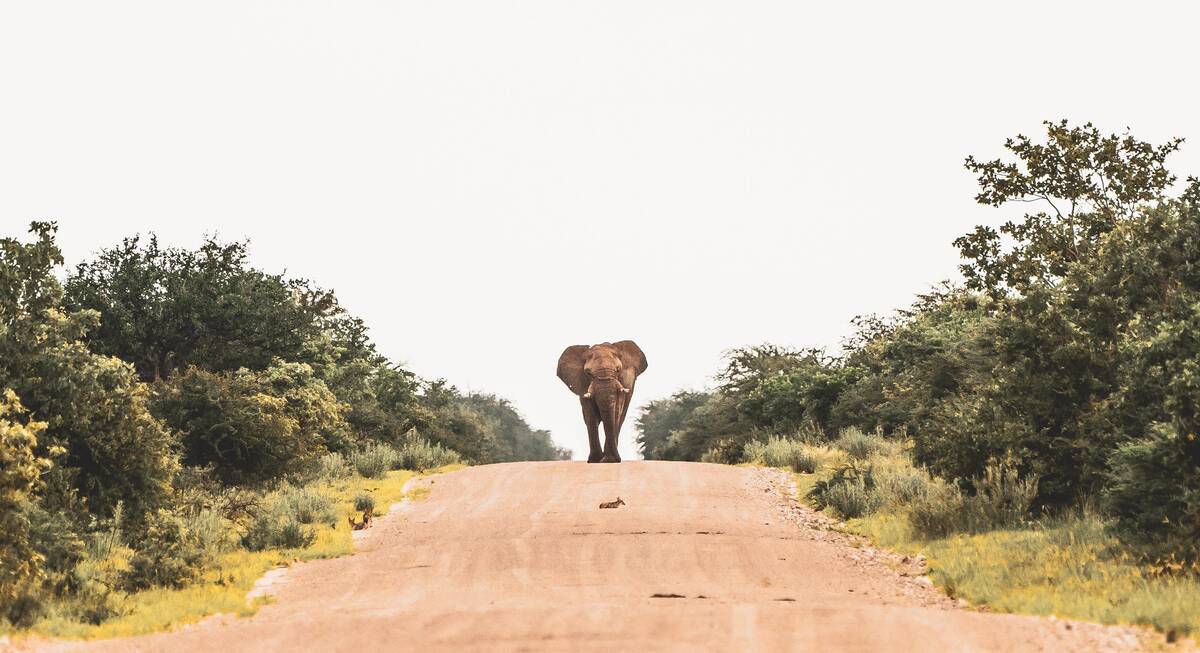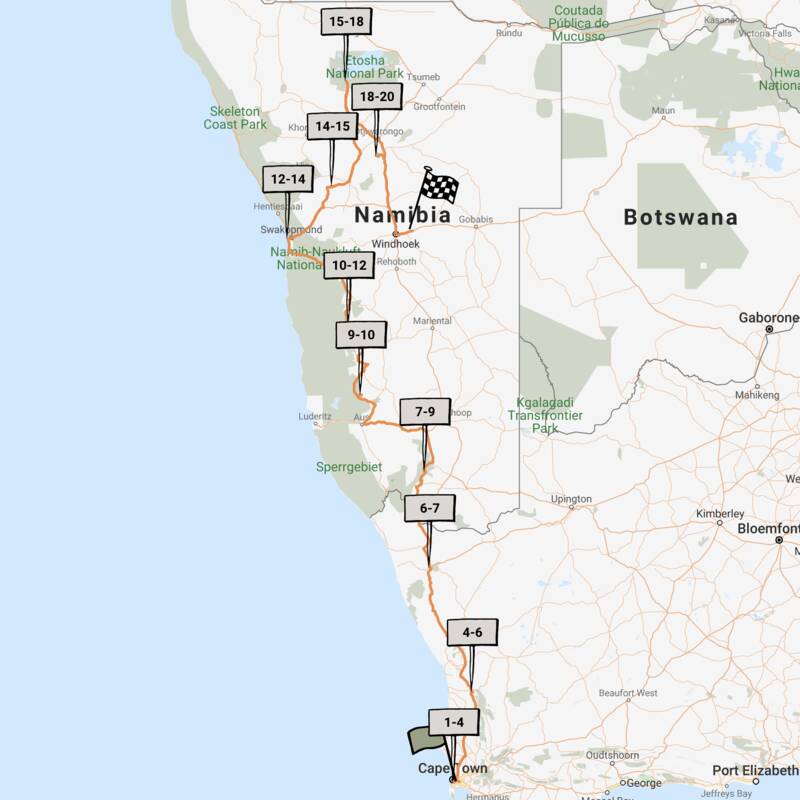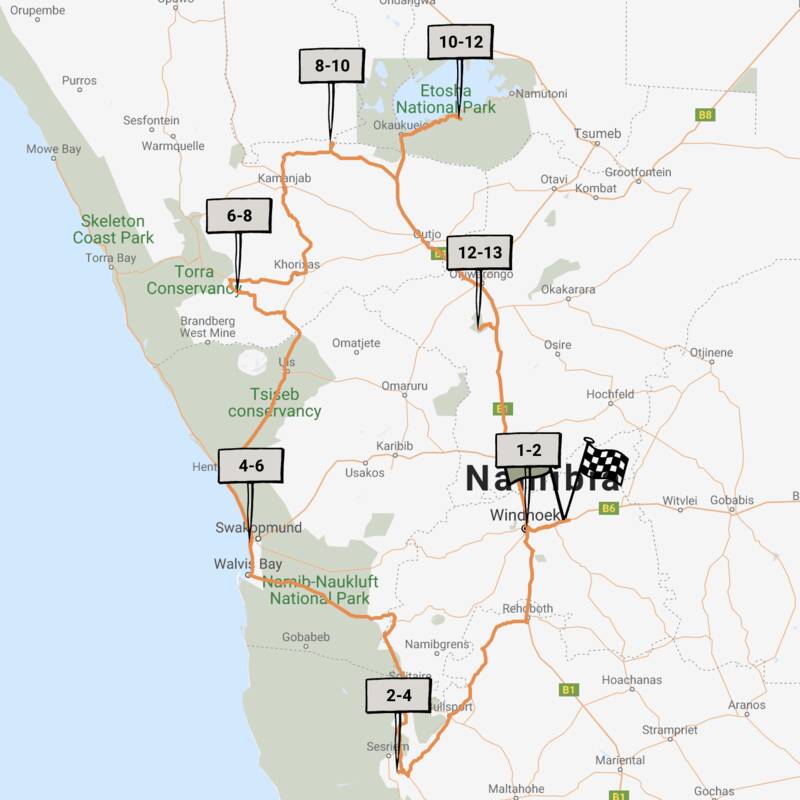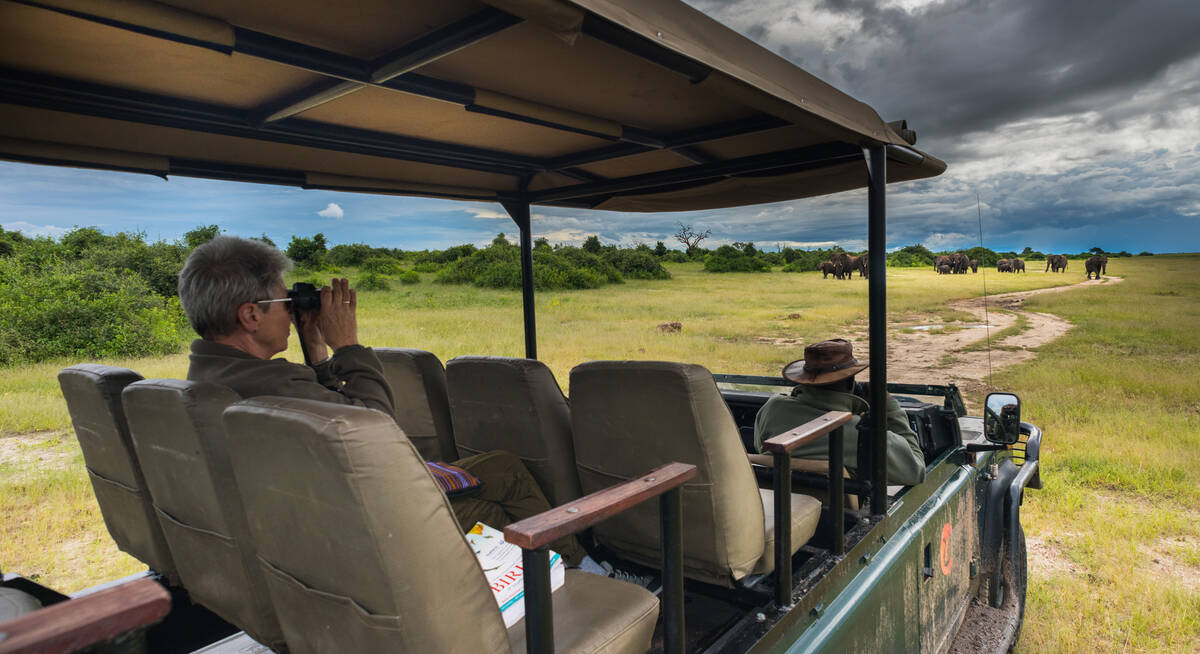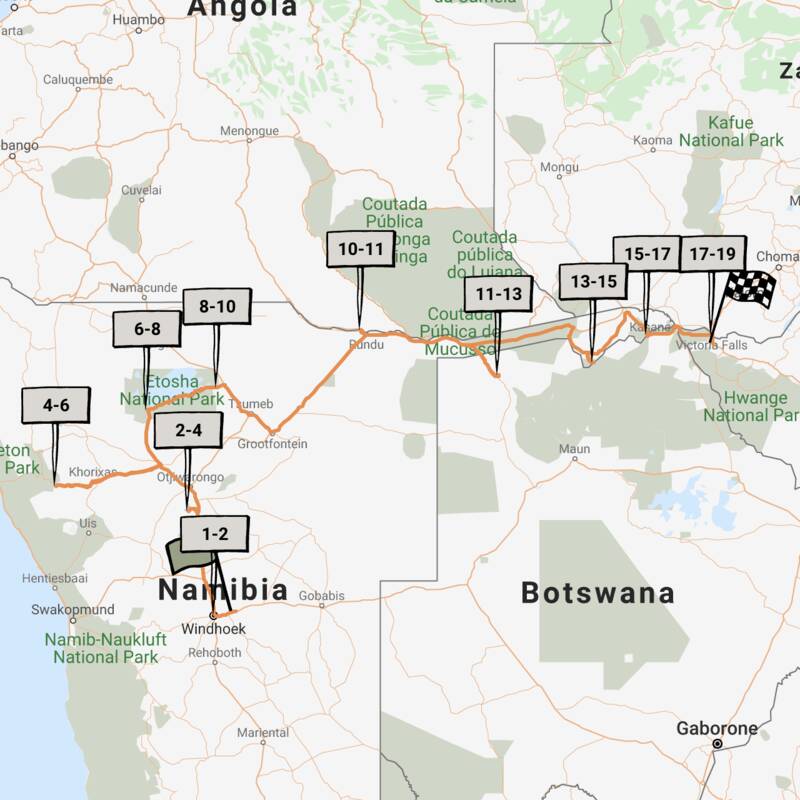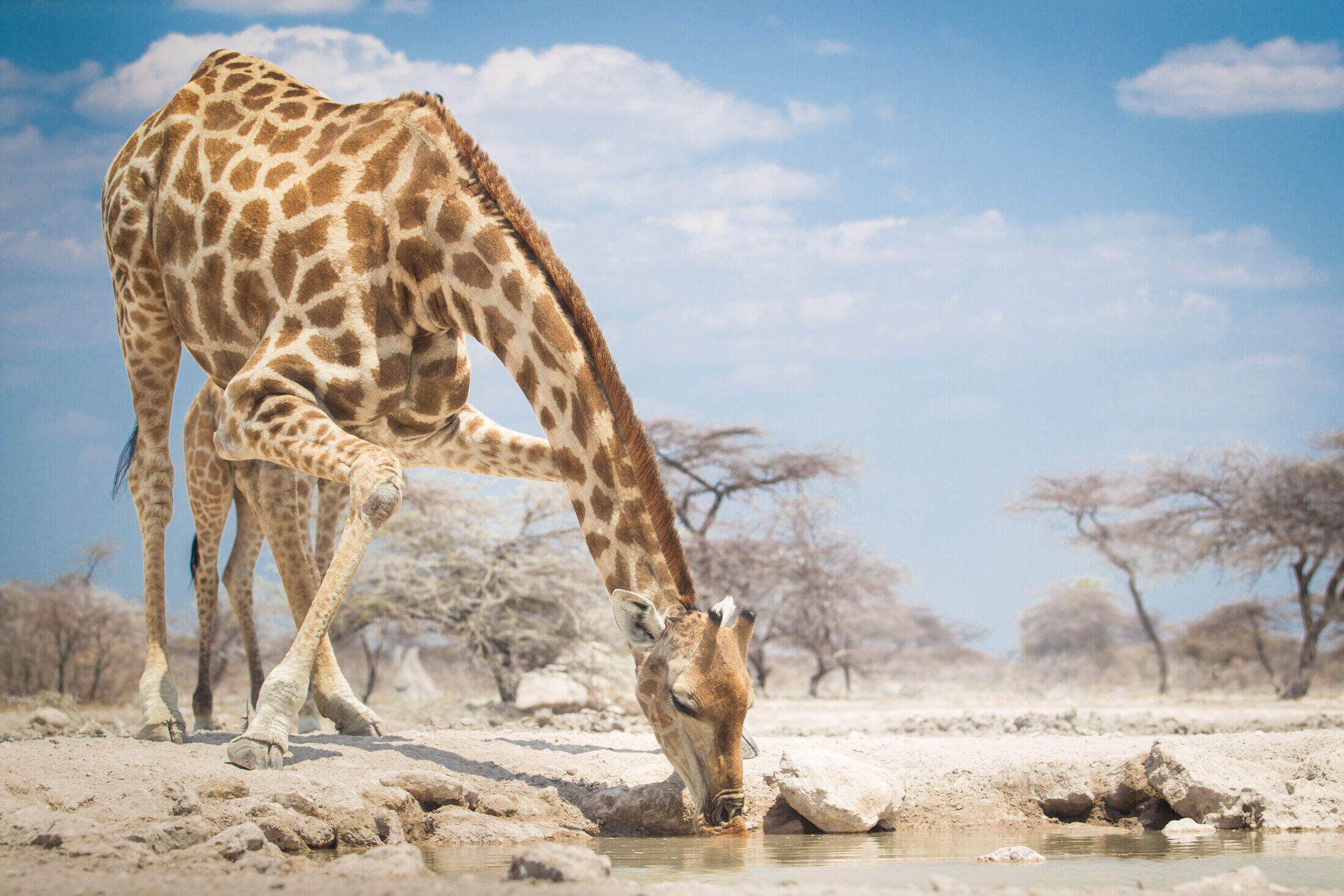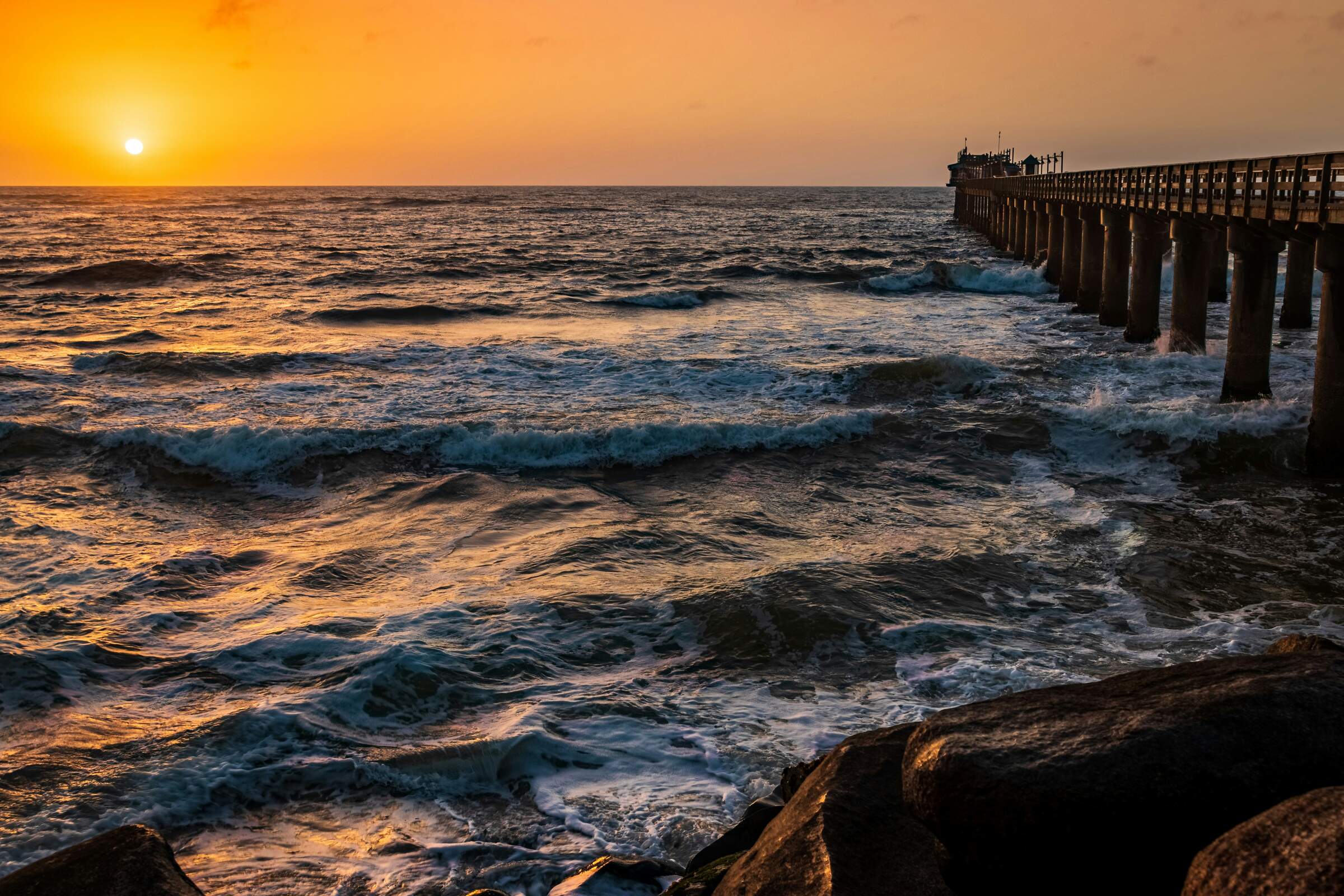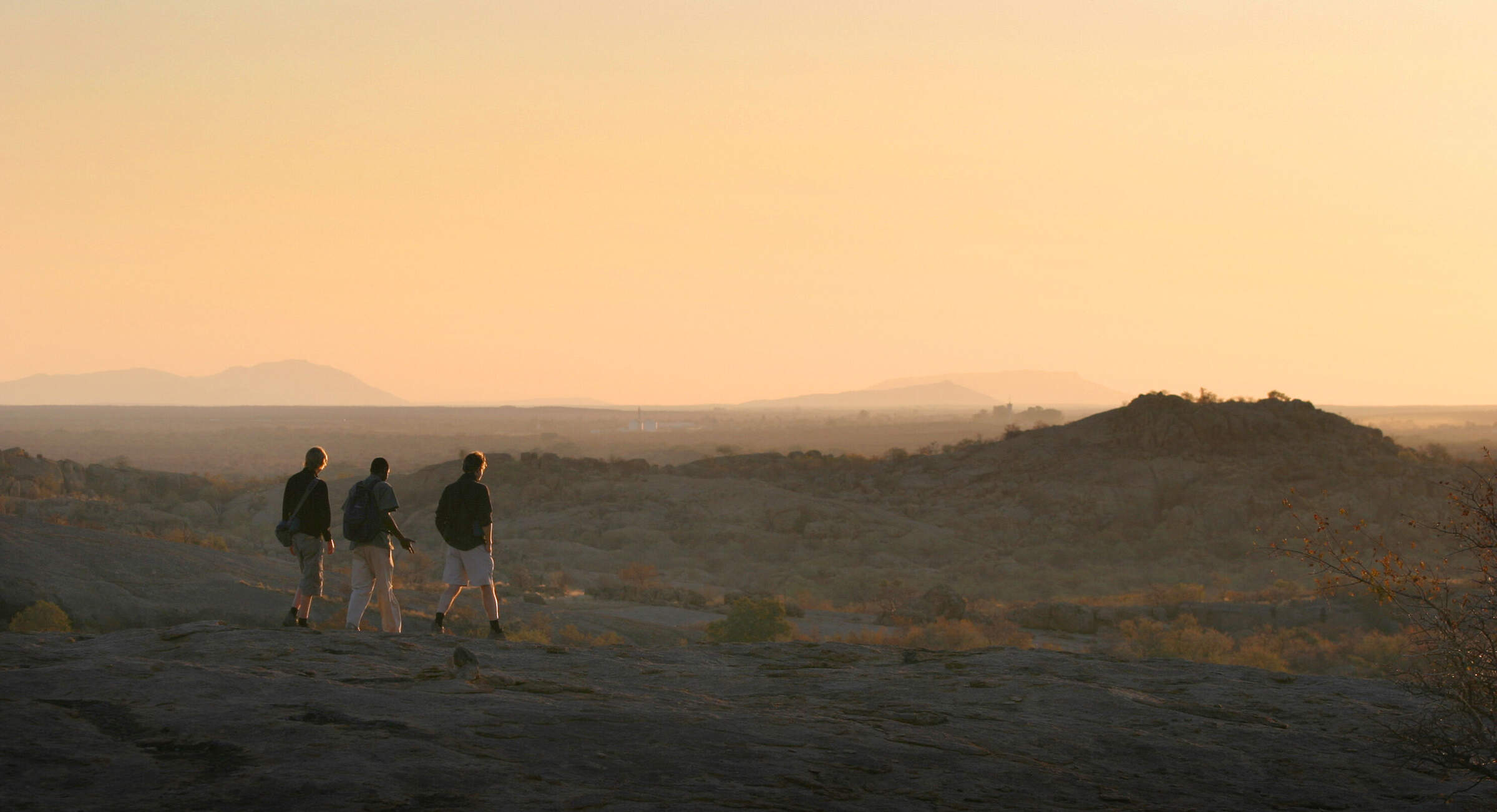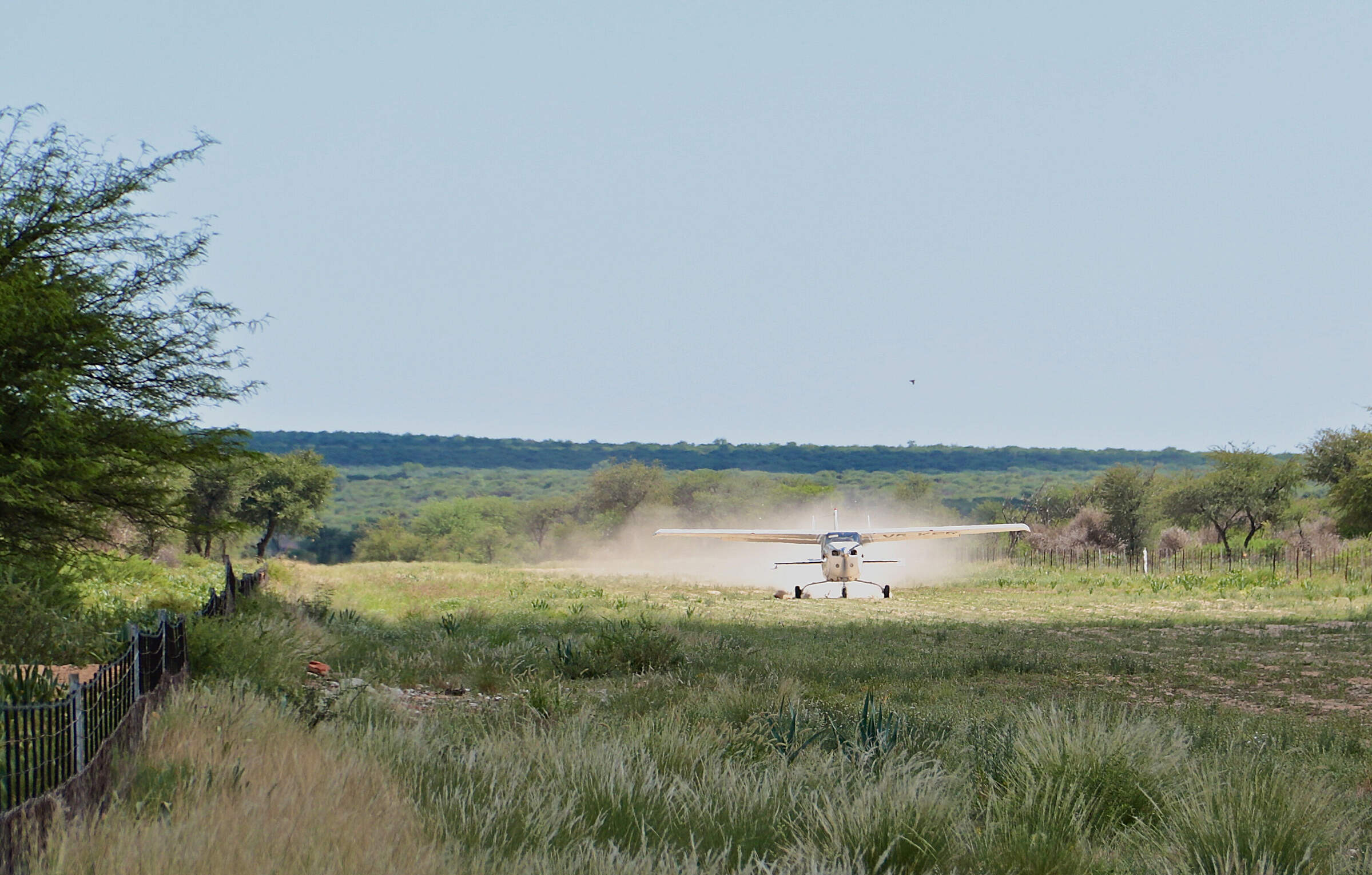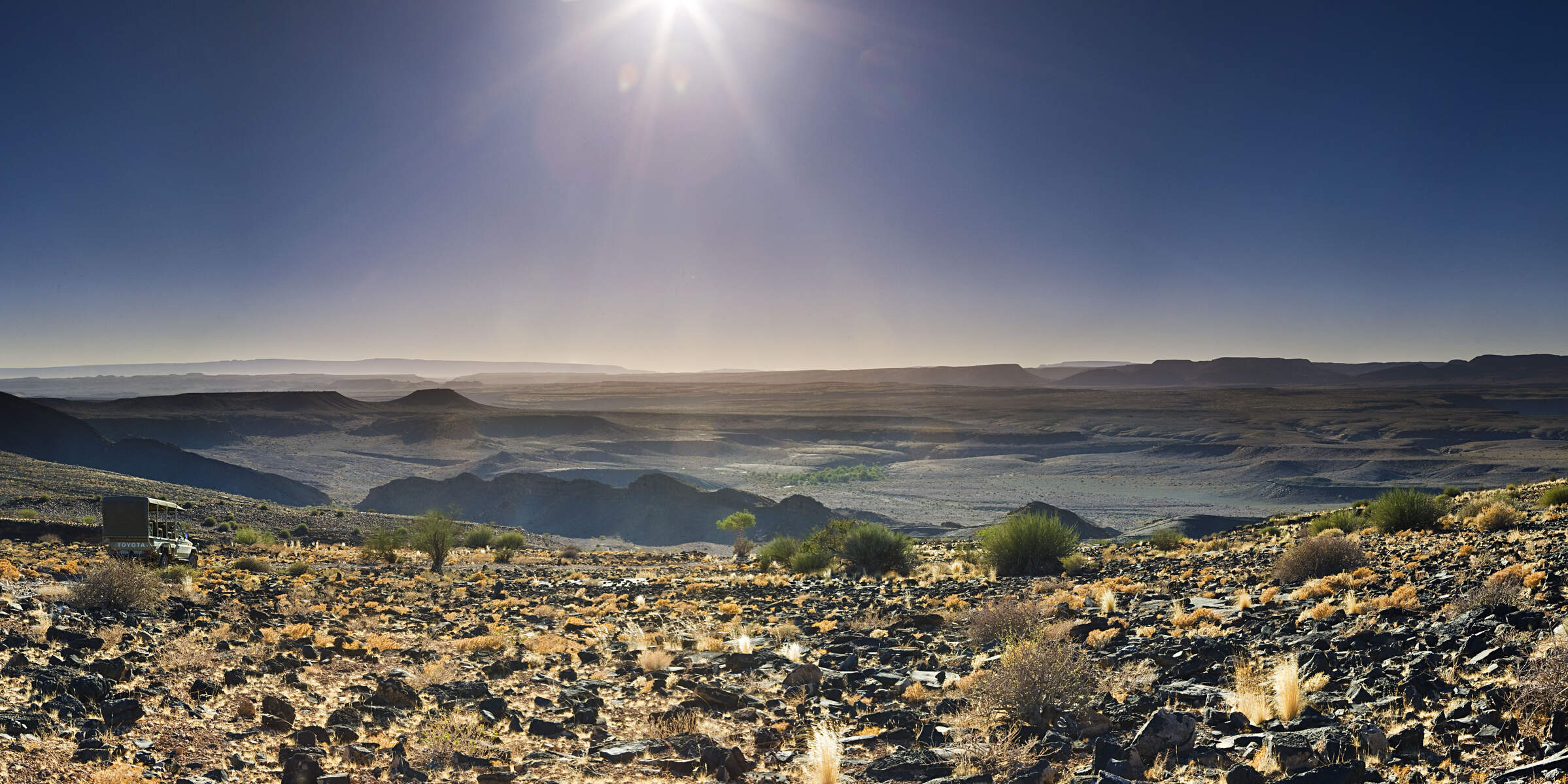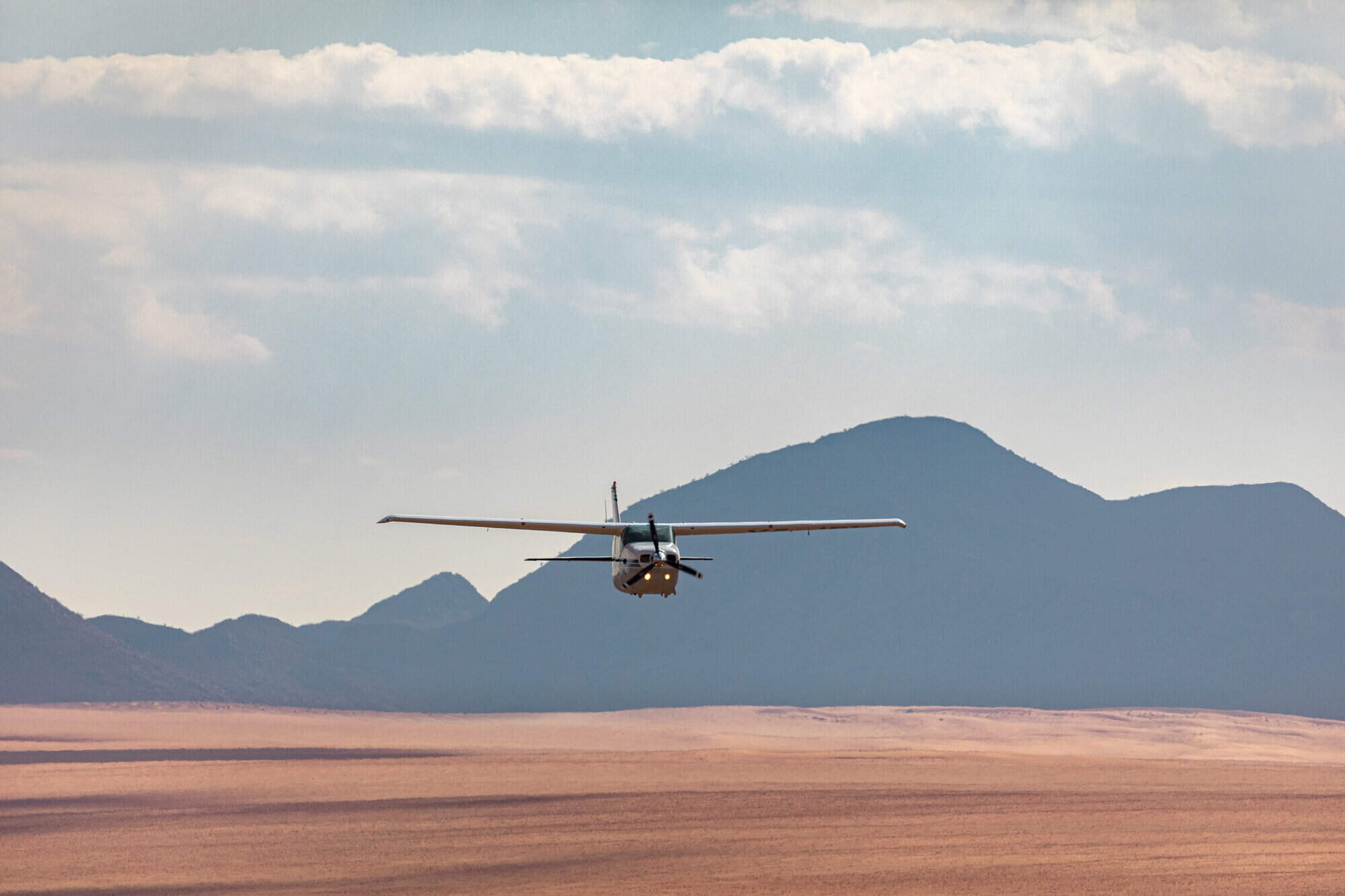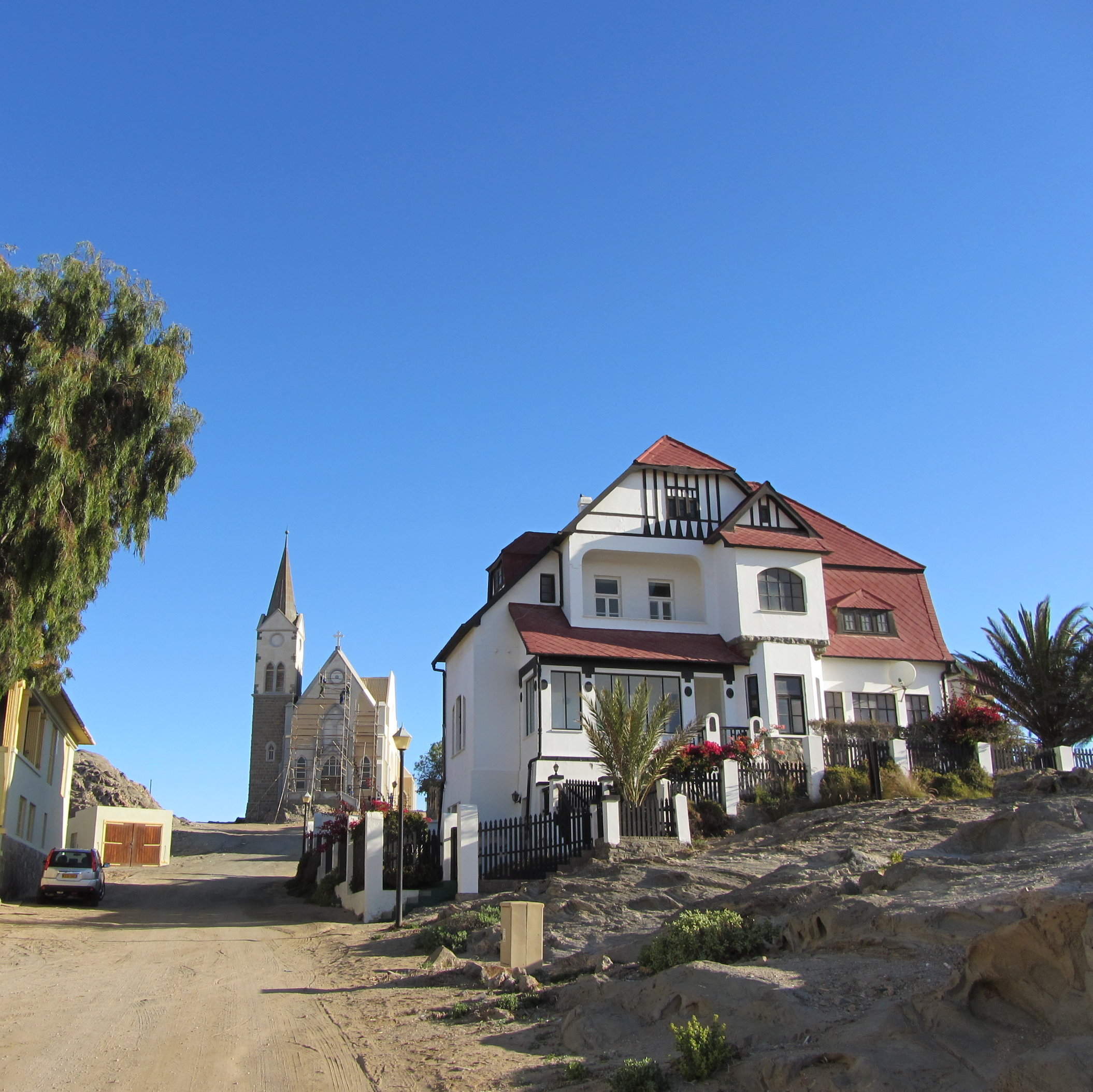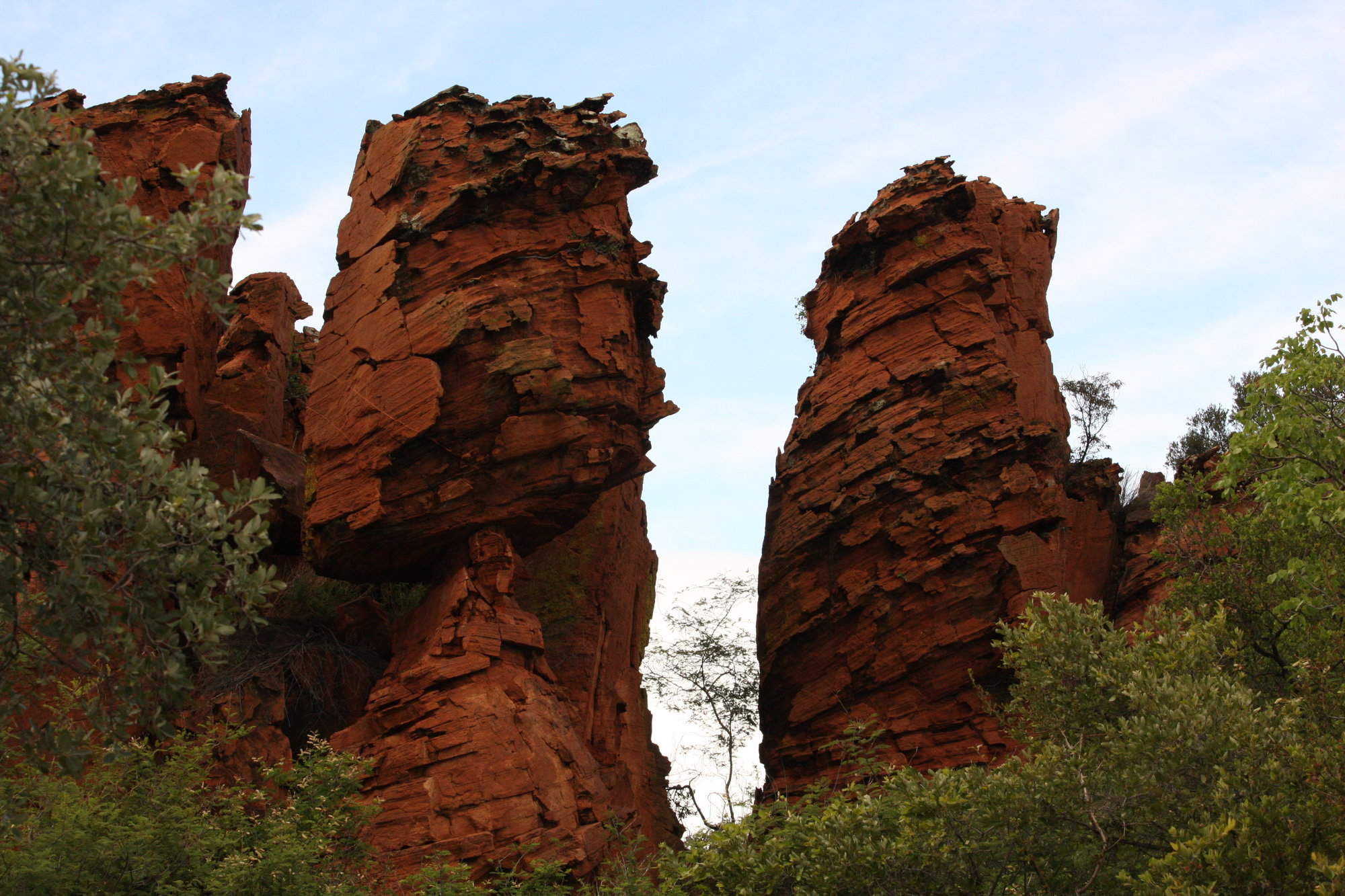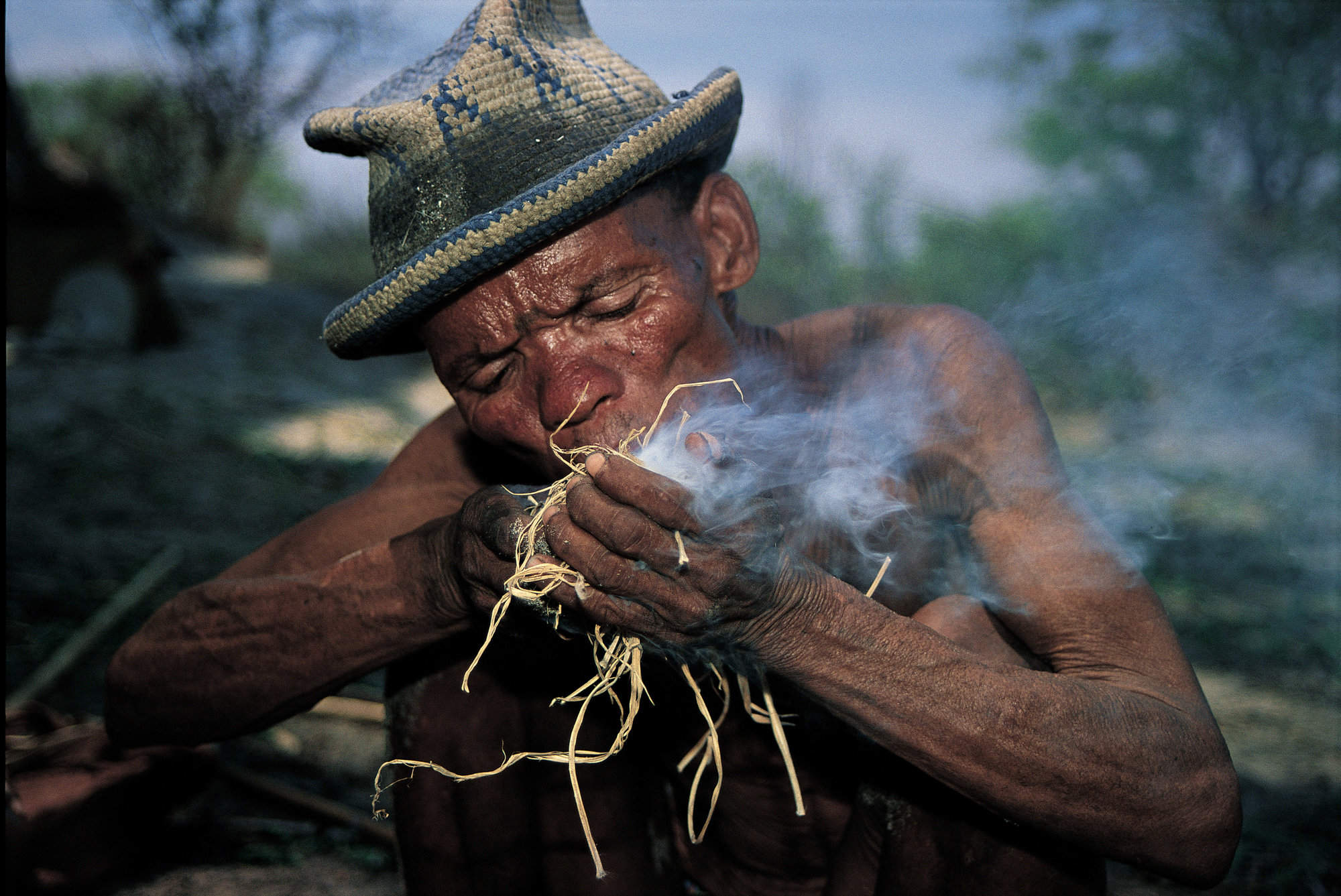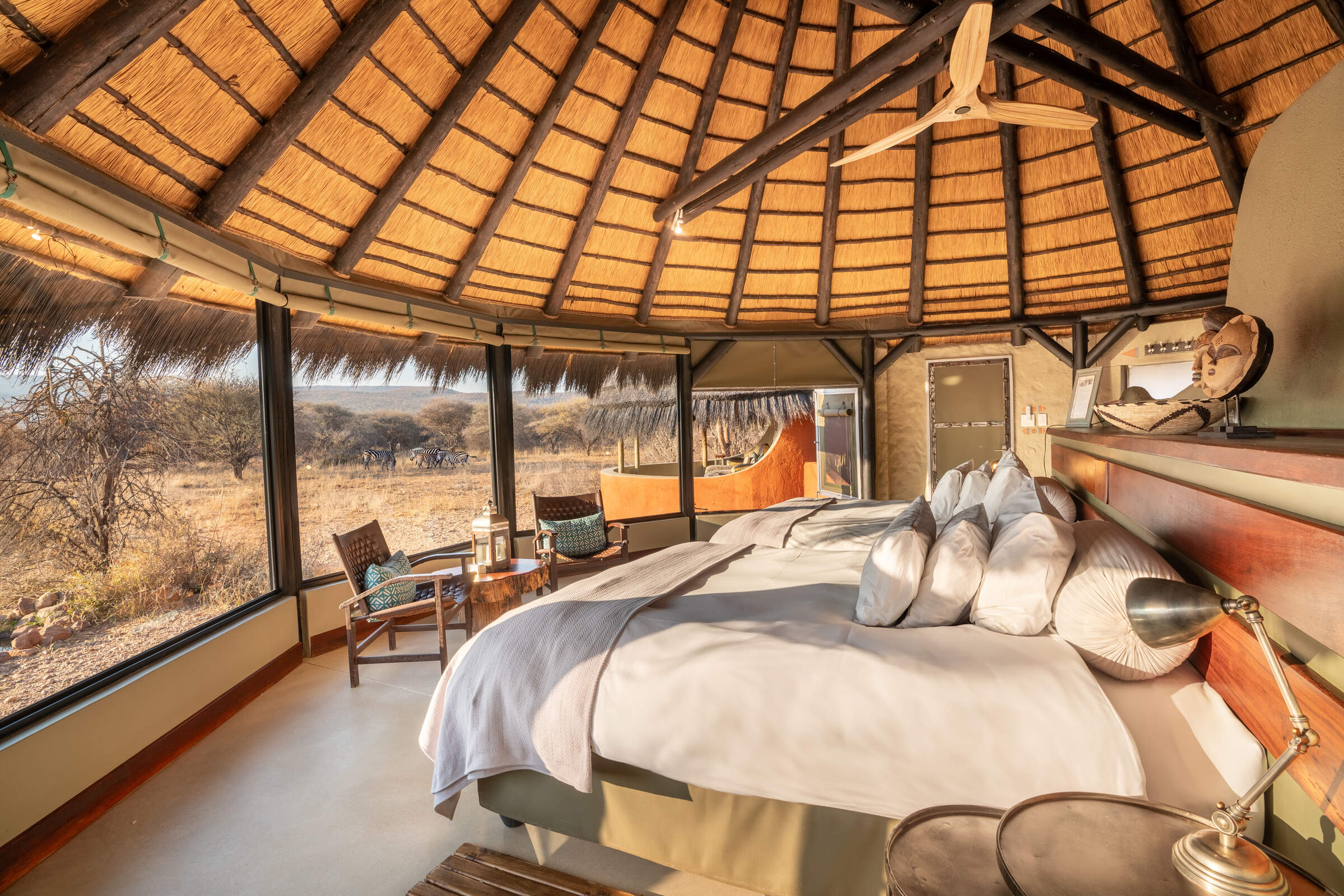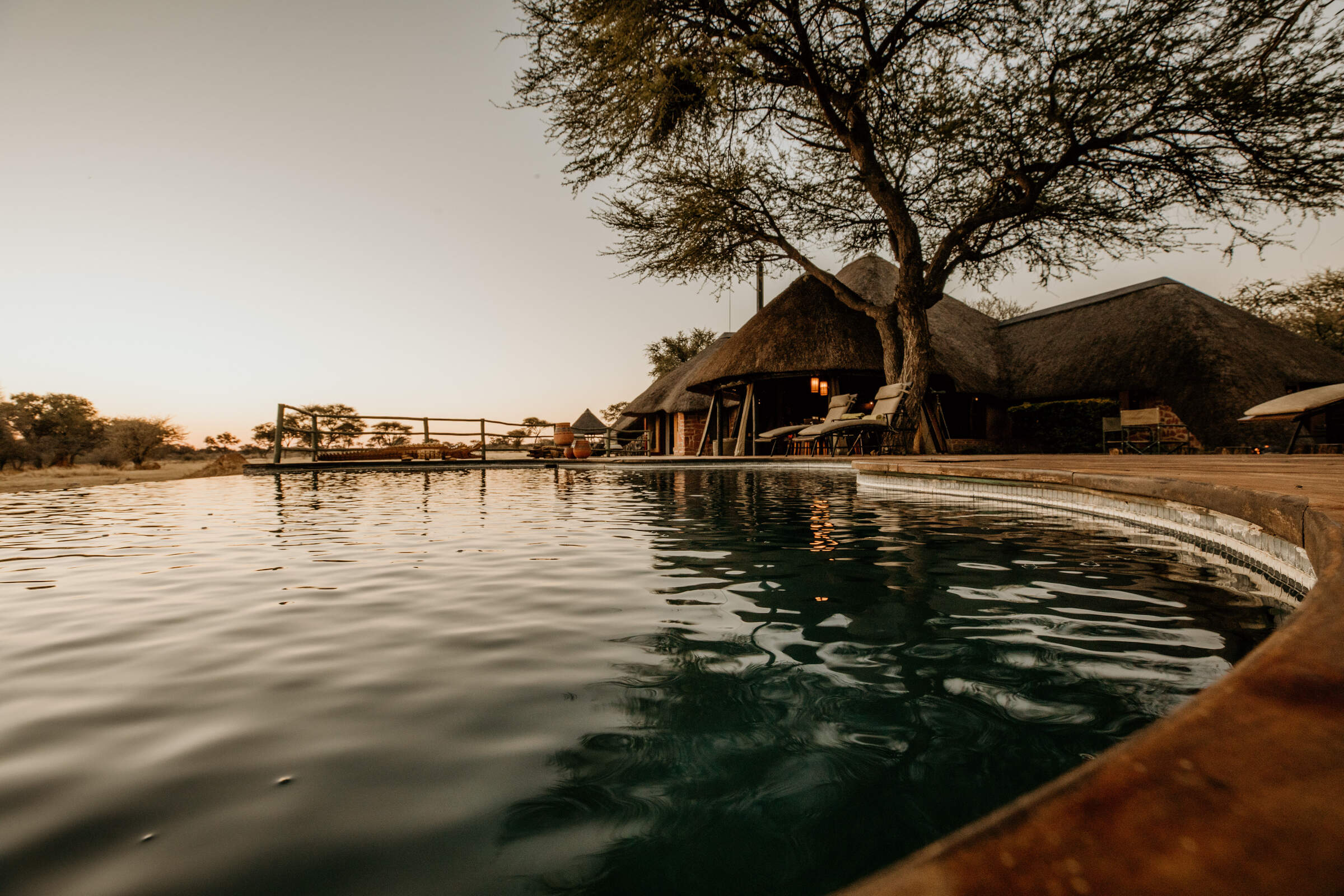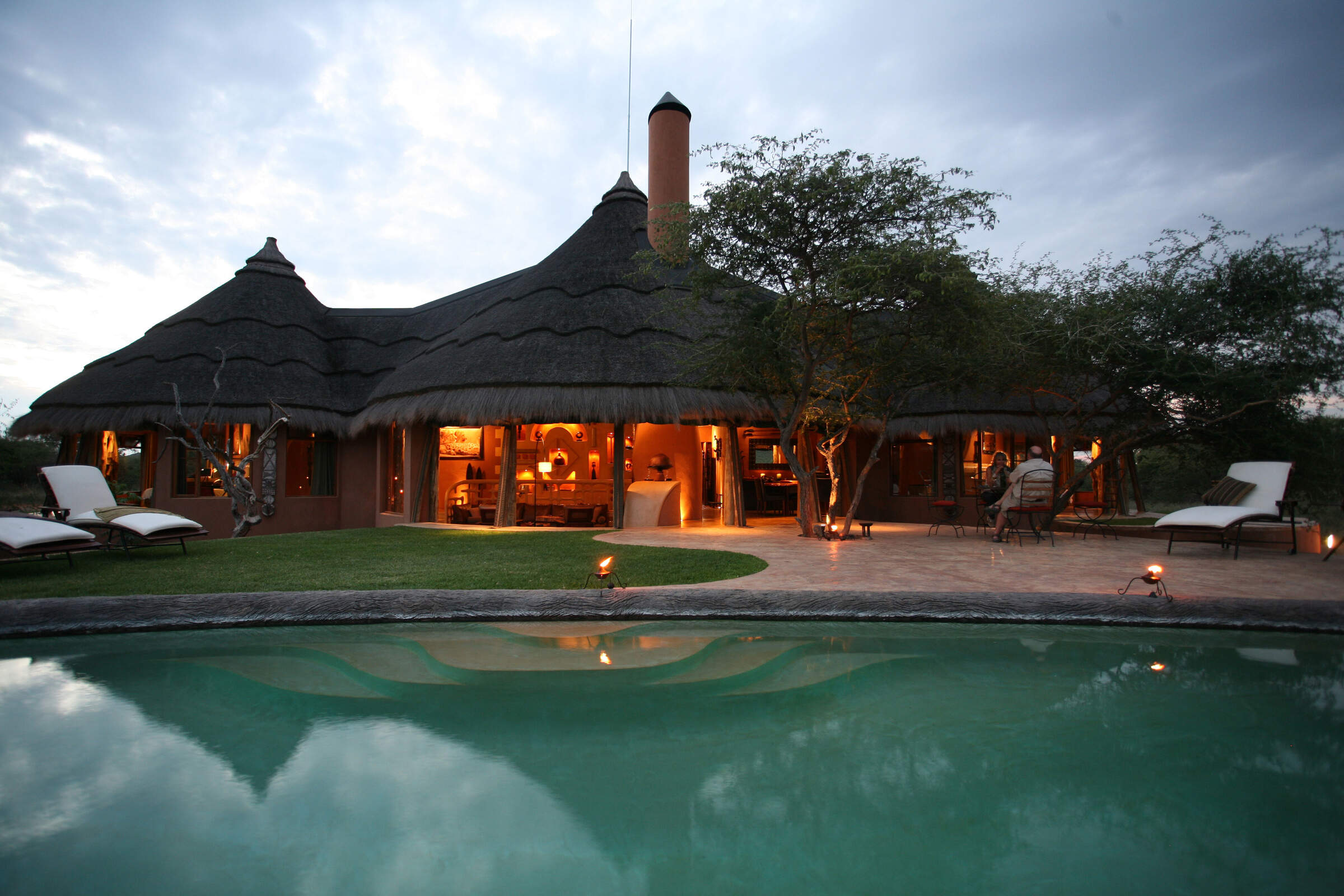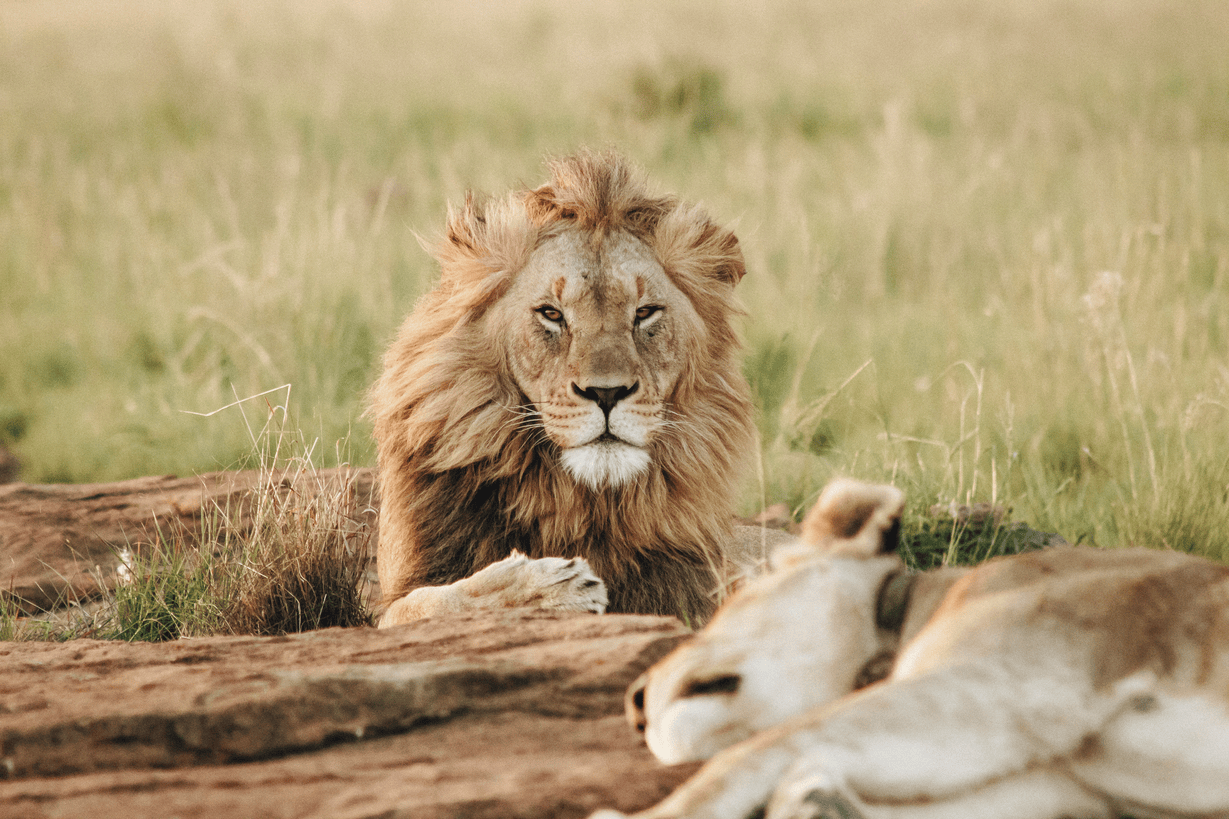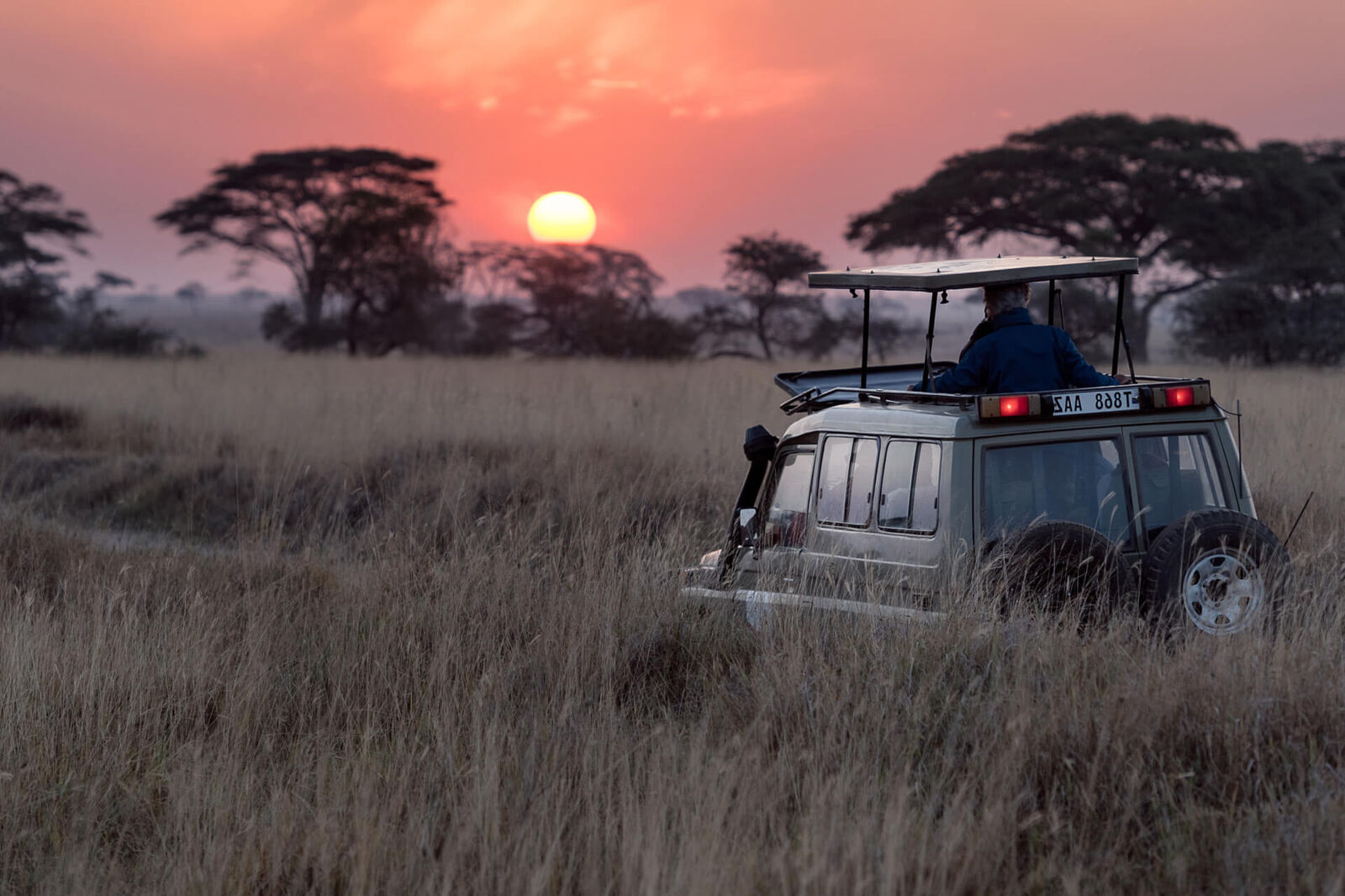About Okonjima Plains Camp
Underpinning almost every stay at Okonjima is the chance to track – and photograph – wildlife, and especially leopard.
Even for the most casual visitor, the plains, rocks and riverine thickets of the huge Okonjima private reserve make an enticing setting for a game drive or a walk through the bush; for the keen photographer, it's close to leopard heaven.
To an extent, Plains Camp mirrors the size of the reserve in its sheer scale. Whether they're after a drink or a substantial meal, a curio or to book a game drive, guests gather in The Barn, a spacious yet contemporary take on a traditional farm building, complete with floor-to-ceiling glass windows overlooking the plains. Murals depict the cattle-farming origins of the camp, while an old farm dam is the influence behind the swimming pool.
Echoing the sense of space are the bedrooms, where splashes of colour and African artwork offset the light décor, and views from the beds could be an incentive for a lie-in.
And in case you need a further incentive, a stay at Okonjima also contributes to the work of the AfriCat Foundation, which is committed to further wildlife conservation through education and research.
- Accommodation
- 24 rooms
- Children
- Best for 6+
- Open
- All year
Activities

4WD Safari

Birdwatching

Cultural excursion

Mountain biking

Night drive

Private activities

Self-guided walking
Safaris visiting Okonjima Plains Camp
Just ideas, we'll always tailor-make a trip for you

Looking for inspiration on where to travel next?
Visit our trip chooser to explore your options and find inspiration for your perfect African adventure
Inspire meTraveller reviews of Okonjima Plains Camp
409 real, un-edited reviews from Expert Africa's travellers.



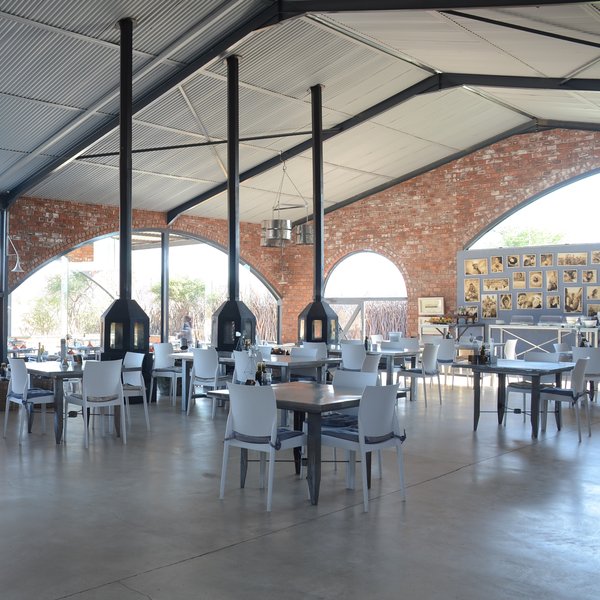







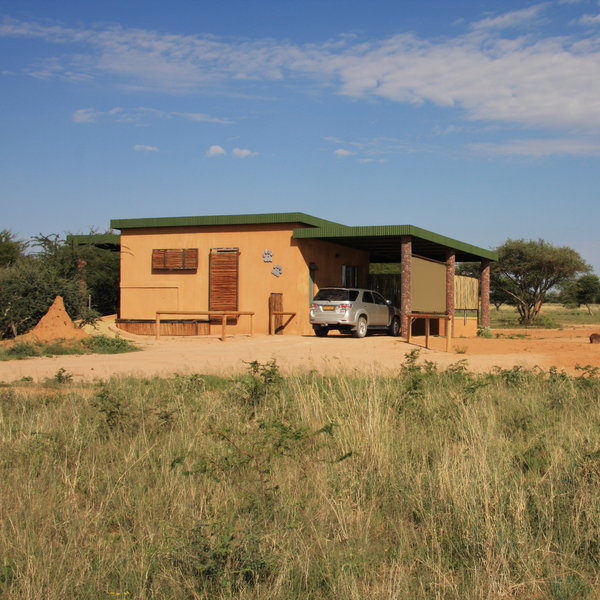









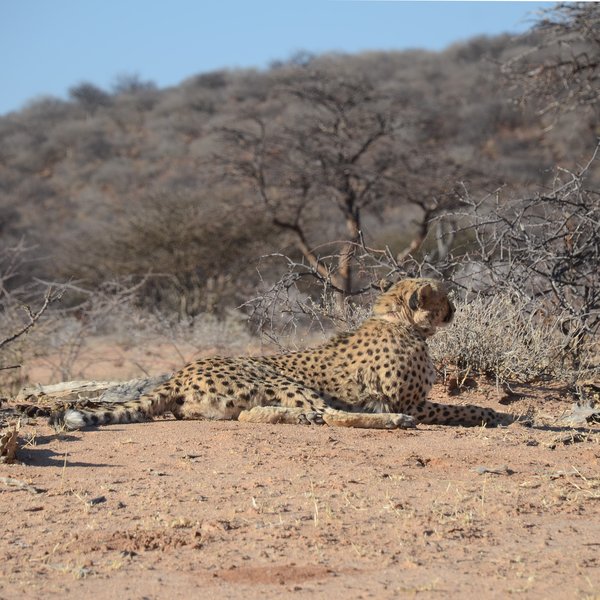



Expert Africa's gallery
When we travel we take lots of photos ourselves to give you a real and un-edited view of the safaris. See our 32 pictures and 2 videos of Okonjima Plains Camp to get the candid view.
View galleryOur travellers’ wildlife sightings from Okonjima Plains Camp
Click an animal to see our traveller's success in sighting them.
How we work this out.

99% success

95% success

95% success

95% success

71% success

59% success

55% success

50% success

33% success

10% success

10% success

9% success
Okonjima Plains Camp's location
Look closer at the environment and surroundings of Okonjima Plains Camp.
When to go to Okonjima Nature Reserve
Our month by month guide: What it's like to visit Okonjima Plains Camp in Okonjima Nature Reserve
Jan
Feb
Mar
Apr
May
Jun
Jul
Aug
Sep
Oct
Nov
Dec
Okonjima Nature Reserve in January
Okonjima Nature Reserve experiences its rainy season in January. The reserve's landscape transforms, with lush vegetation sprouting across the 220km2 area. This greening attracts diverse wildlife, including the reserve's famous leopards and cheetahs.
The AfriCat Foundation's conservation efforts are in full swing, with researchers monitoring how the increased rainfall affects predator behaviour. Visitors can participate in tracking activities, though the thicker vegetation can make sightings more challenging. Guided bush walks provide insights into the reserve's flora, now in bloom. Night drives reveal nocturnal creatures taking advantage of the cooler evenings.
Birdwatchers will enjoy the numerous migrant species present during this time.
- Variable weather, occasional thunderstorms
- Wildlife dispersed, harder to spot
- Birdlife at its most spectacular
- Low tourist numbers, favourable rates
- AfriCat Foundation tours less crowded
Our view
This is not a great time to visit
Weather in January
Okonjima Nature Reserve in February
February at Okonjima Nature Reserve sees continued rainfall, maintaining the lush landscape.
The AfriCat Foundation's research projects are focussed on how predators adapt to the wet conditions. Visitors can join leopard tracking expeditions, though dense vegetation may make sightings more challenging. The reserve's waterholes become less crucial for wildlife, as water is more widely available. This dispersal of animals creates unique tracking opportunities for guests. Guided bush walks reveal a myriad of smaller creatures and insects thriving in the wet conditions.
The AfriCat Pangolin Research Project is particularly active, as these elusive creatures are more easily spotted in the softer soil. Birdwatching remains excellent, with many species in breeding plumage.
- Humid with some rain, localised storms
- Lush vegetation, bush feels alive
- Wildlife harder to see in Okonjima
- Excellent time for bird enthusiasts
- Low season rates at Okonjima lodges
Our view
This is not a great time to visit
Weather in February
Okonjima Nature Reserve in March
As rains begin to taper off at Okonjima Nature Reserve, wildlife viewing improves. The landscape remains verdant, providing ample food for herbivores and their predators.
The AfriCat Foundation's leopard and cheetah rehabilitation programs are busy, with researchers monitoring how these big cats adapt as the seasons change. Visitors can participate in tracking activities with higher chances of successful sightings.
Camps in Okonjima offer excellent bases for exploration, with guided bush walks revealing the intricate ecosystems of the reserve. Night drives provide opportunities to spot nocturnal animals, including honey badgers and porcupines.
The AfriCat Pangolin Research Project continues its vital work, offering guests unique insights into these rare creatures. As the landscape dries, animals begin to concentrate around permanent water sources, enhancing game viewing opportunities.
- Weather becoming drier as the month progresses
- Animals looking sleek after months of plenty
- Leopard tracking still challenging
- Migrant birds begin to leave
- Low visitor numbers, great lodge deals
Our view
A good time to visit, with pros & cons
Weather in March
Okonjima Nature Reserve in April
April marks the transition to the dry season at Okonjima Nature Reserve. Leopard and cheetah sightings become more frequent as vegetation thins and animals congregate around water sources. The reserve's waterholes become increasingly important, offering excellent game viewing opportunities throughout the day.
Guided bush walks reveal the reserve's diverse flora and fauna, with knowledgeable guides explaining the intricate relationships within the ecosystem. Night drives provide thrilling encounters with nocturnal predators.
The AfriCat Pangolin Research Project continues, though sightings become more challenging as the ground hardens. Birdwatching remains rewarding, with many species still in breeding plumage.
- Cooler nights, drier days at Okonjima
- Wildlife starting to congregate near water
- Improved visibility for leopard tracking
- Fresh, clean air ideal for photography
- Easter sees a slight increase in visitors
Our view
A good time to visit, with pros & cons
Weather in April
Okonjima Nature Reserve in May
May at Okonjima Nature Reserve sees the dry season in full swing. The AfriCat Foundation's tracking programs yield excellent results as wildlife concentrates around water sources. Leopard sightings are frequent. The reserve's waterholes become wildlife hotspots, offering excellent game viewing throughout the day.
The reserve's landscape takes on golden hues, creating stunning backdrops for photography. Guided bush walks offer intimate encounters with smaller creatures and detailed explanations of the reserve's ecology. Night drives reveal a different side of Okonjima, with opportunities to spot elusive nocturnal animals.
The AfriCat Pangolin Research Project faces challenges as these creatures become more elusive in the drier conditions. Birdwatching remains rewarding, with resident species easy to spot in the thinning vegetation.
- Lovely weather, warm days, cool nights
- Wildlife easier to spot around waterholes
- Excellent conditions for night drives
- AfriCat tours offer great sightings
- Shoulder season, moderate lodge rates
Our view
A very good time to visit
Weather in May
Okonjima Nature Reserve in June
June brings cooler temperatures to Okonjima Nature Reserve, ideal for outdoor activities. Leopard sightings and game viewing are excellent as animals congregate around diminishing water sources.
Guided bush walks reveal the reserve's winter adaptations, while night drives provide thrilling encounters with nocturnal wildlife.
Birdwatching focuses on resident species, with clear skies enhancing visibility. Photographers benefit from the crisp air and golden light of winter, capturing stunning images of Okonjima's diverse wildlife against the dry landscape.
- Clear days, cold nights at Okonjima
- Prime time for leopard and cheetah viewing
- Night drives reveal nocturnal wildlife
- Stargazing conditions are excellent
- Moderate rates, increasing bookings
Our view
A very good time to visit
Weather in June
Okonjima Nature Reserve in July
July at Okonjima Nature Reserve offers prime wildlife viewing conditions. The dry landscape concentrates animals around water sources. Leopard sightings are frequent, especially around the reserve's waterholes.
The Okonjima Plains Camp and Bush Camp provide comfortable bases for exploration, with heated pools offering respite from the cool air. Guided bush walks reveal the intricacies of the winter ecosystem, while night drives showcase the reserve's nocturnal inhabitants.
Birdwatching focuses on resident species, with raptors particularly visible against the clear skies. Photographers benefit from the excellent visibility and golden light, capturing stunning images of wildlife against the stark winter landscape.
- Dry days, cold nights, perfect for safaris
- Peak season for wildlife viewing
- Leopard tracking highly successful
- Night hide observations at their best
- High rates, lodges often fully booked
Our view
A very good time to visit
Weather in July
Okonjima Nature Reserve in August
August sees Okonjima Nature Reserve at its driest, offering unparalleled wildlife viewing opportunities. The reserve's waterholes become wildlife hotspots, offering spectacular game viewing throughout the day.
The AfriCat Foundation's conservation efforts yield frequent leopard and cheetah sightings as predators concentrate around waterholes. Guided bush walks reveal the resilience of the ecosystem in dry conditions, while night drives offer thrilling encounters with nocturnal creatures.
Birdwatching focuses on resident species and early migrants. Photographers benefit from dust-free air and golden light, capturing stunning images of Okonjima's diverse wildlife against the stark landscape.
- Ideal conditions for wildlife watching
- Leopards and cheetahs easily spotted
- Busy season, family rooms in high demand
- Night drives offer exceptional sightings
- Book Okonjima lodges well in advance
Our view
Fantastic: the very best time to visit
Weather in August
Okonjima Nature Reserve in September
September at Okonjima Nature Reserve offers excellent wildlife viewing as the dry season peaks. The landscape is at its sparsest, concentrating wildlife around remaining water sources. The reserve's waterholes are crucial gathering points, offering spectacular game viewing opportunities.
Birdwatching improves with the arrival of early migrants. Photographers benefit from clear skies and golden light, capturing stunning images of wildlife against the dramatic, dry landscape.
- Warming temperatures, still dry
- Excellent month for predator sightings
- AfriCat Foundation tours very popular
- Vegetation sparse, enhancing visibility
- High season rates, limited availability
Our view
Fantastic: the very best time to visit
Weather in September
Okonjima Nature Reserve in October
October brings the promise of change to Okonjima Nature Reserve. The AfriCat Foundation's researchers observe shifting animal behaviours as the first rains approach. Leopard sightings remain excellent, with predators taking advantage of prey concentrated around dwindling water sources. The reserve's waterholes remain crucial, offering spectacular game viewing. Guided bush walks reveal the first signs of the coming wet season.
Birdwatching improves dramatically with the arrival of numerous migrant species. Photographers capture stunning images of wildlife against a landscape poised for transformation.
- Hot and dry, desert-like conditions
- Peak time for wildlife viewing at Okonjima
- Leopard and cheetah sightings frequent
- Night drives reveal active nocturnal life
- Book well ahead, lodges often full
Our view
A very good time to visit
Weather in October
Okonjima Nature Reserve in November
November marks the beginning of the wet season at Okonjima Nature Reserve. Early rains bring new growth, dispersing wildlife across the reserve. Leopard tracking becomes more challenging but rewarding as these predators adapt to the changing environment. The AfriCat Pangolin Research Project sees a surge in activity as softer soils make these creatures easier to spot.
Birdwatching is excellent, with numerous migrant species arriving in breeding plumage. While game viewing at waterholes decreases, the lush landscape offers new photographic opportunities.
- Variable month, depending on rains
- New vegetation if rains have started
- Wildlife viewing still good, especially cats
- Birdlife increasing with migrant arrivals
- Shoulder season, good value at lodges
Our view
A good time to visit, with pros & cons
Weather in November
Okonjima Nature Reserve in December
December at Okonjima Nature Reserve sees the wet season in full swing. The landscape transforms, with lush vegetation sprouting across the reserve. Wildlife disperses, making tracking more challenging but rewarding. Guided bush walks reveal the reserve's dramatic transformation, while night drives showcase increased nocturnal activity. The AfriCat Pangolin Research Project benefits from softer soils, increasing the chances of sightings.
Birdwatching is at its peak, with numerous migrant species present. While traditional game viewing becomes more challenging, the verdant landscape offers unique photographic opportunities, capturing Okonjima's diverse ecosystems in their most vibrant state.
- Hot days, possible cooling showers
- Green landscapes if rains have come
- Excellent for birdwatching at Okonjima
- Leopards and cheetahs harder to spot
- Holiday season brings more visitors
Our view
This is not a great time to visit
Weather in December
Other areas in Namibia
Namibia fact file
Useful information and advice to help you prepare for a trip including Okonjima Plains Camp
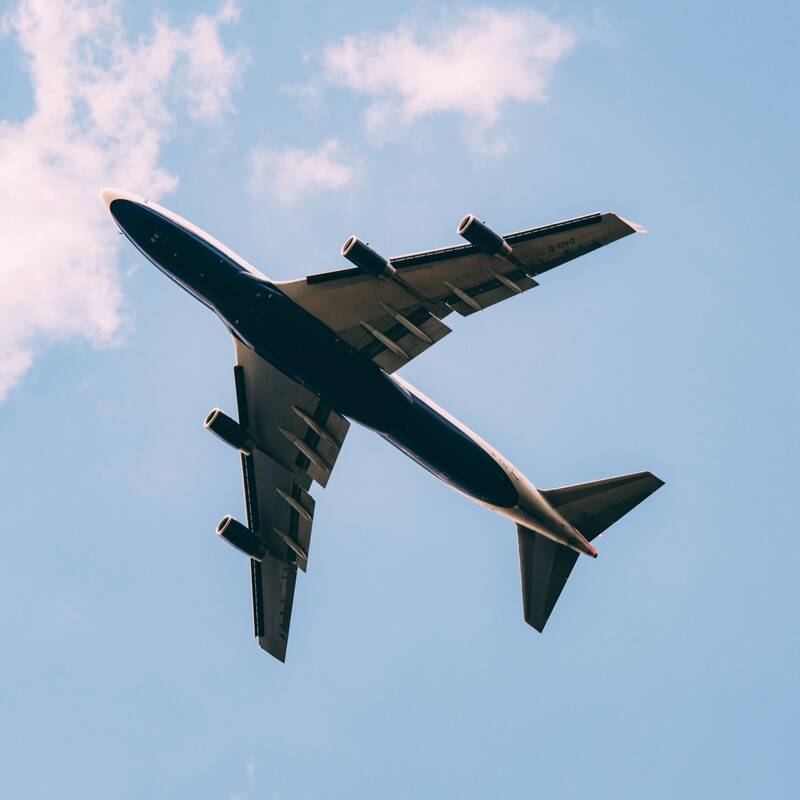
Flights to Namibia
Advice on how to get to Namibia

LGBT travel in Namibia
Attitudes, the law & our experiences
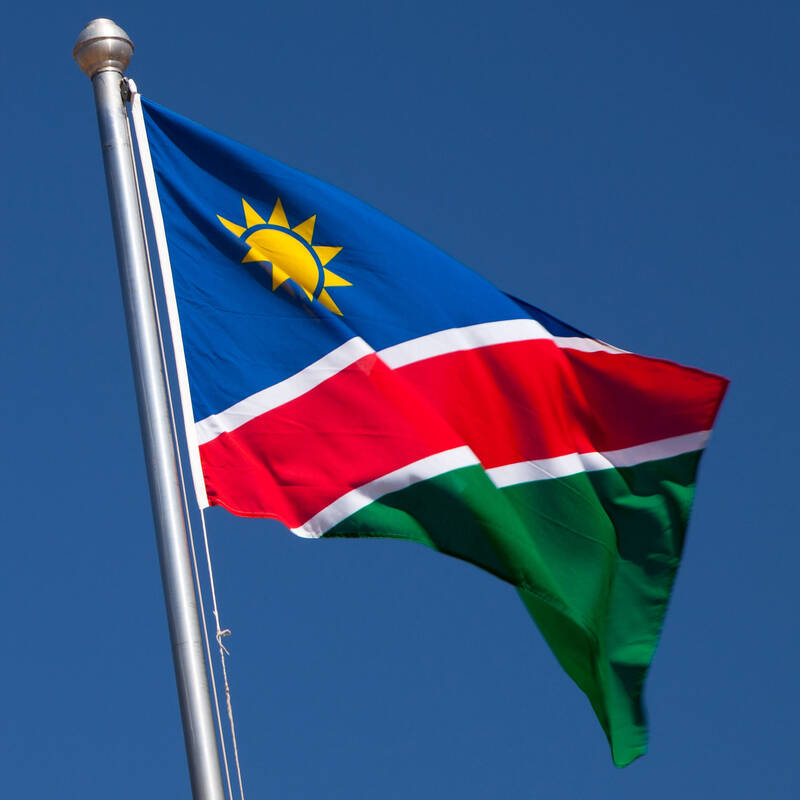
Namibia general info
Essential travel info on Namibia

Namibia safari packing list
Advice and tips on what to take to pack
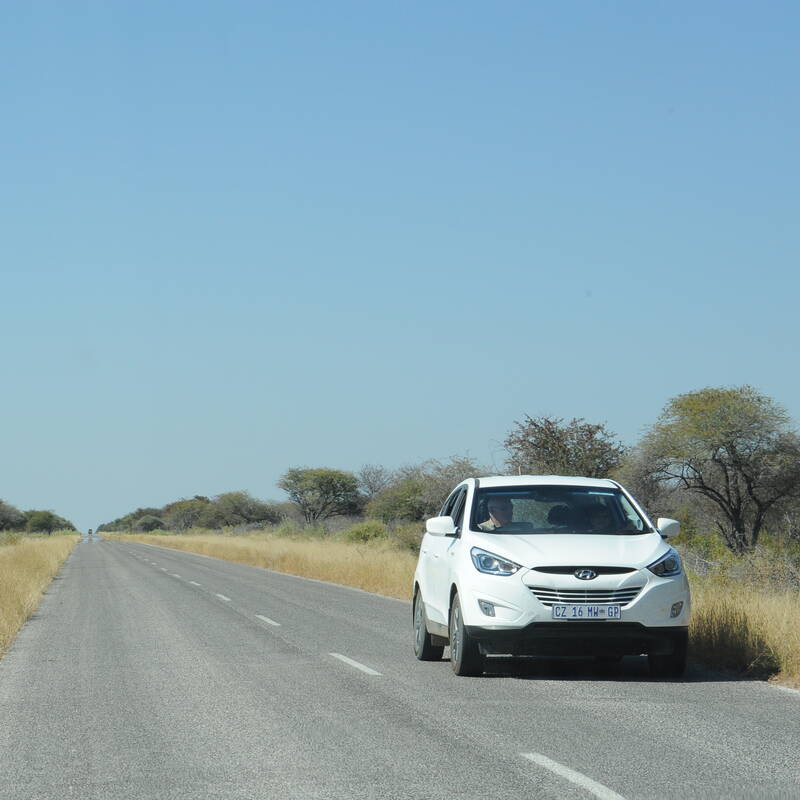
Self-drive - car types
Which car type to rent
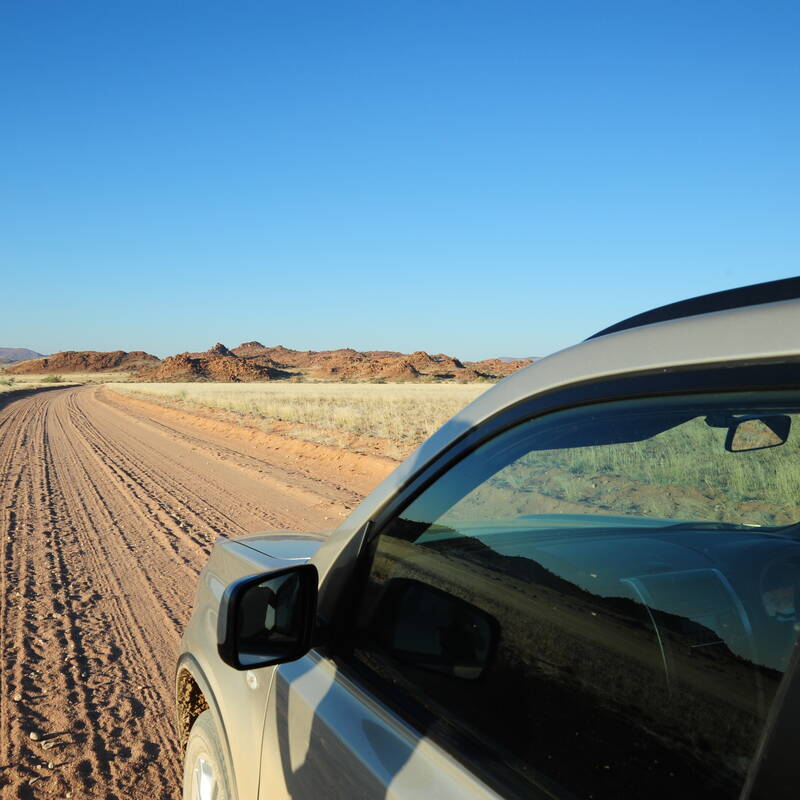
Self-drive - driving tips
Tips to make driving in Namibia easier
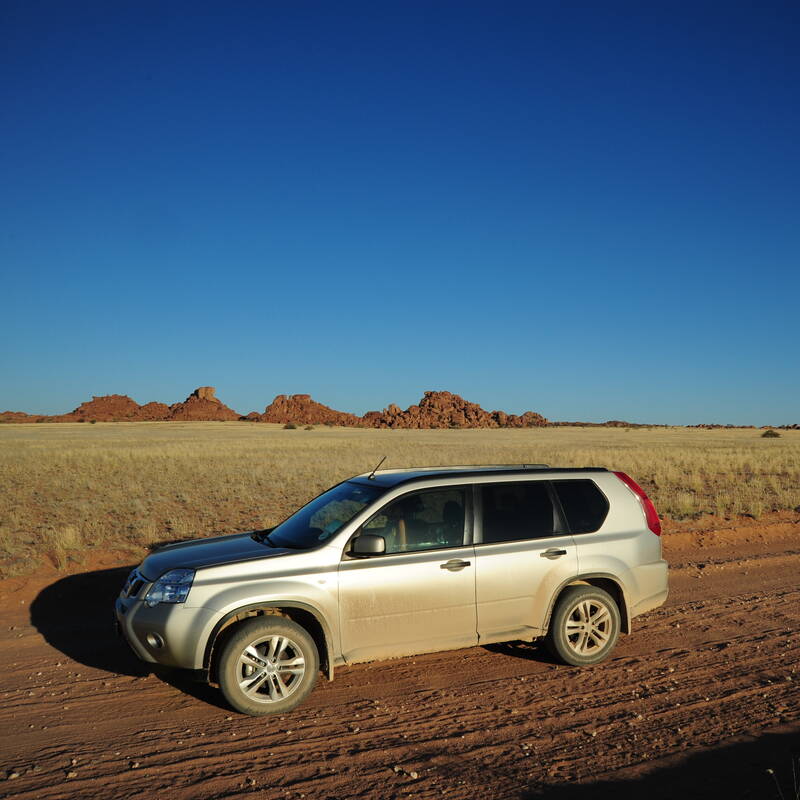
Self-drive - hire groups
The different car hire group to rent
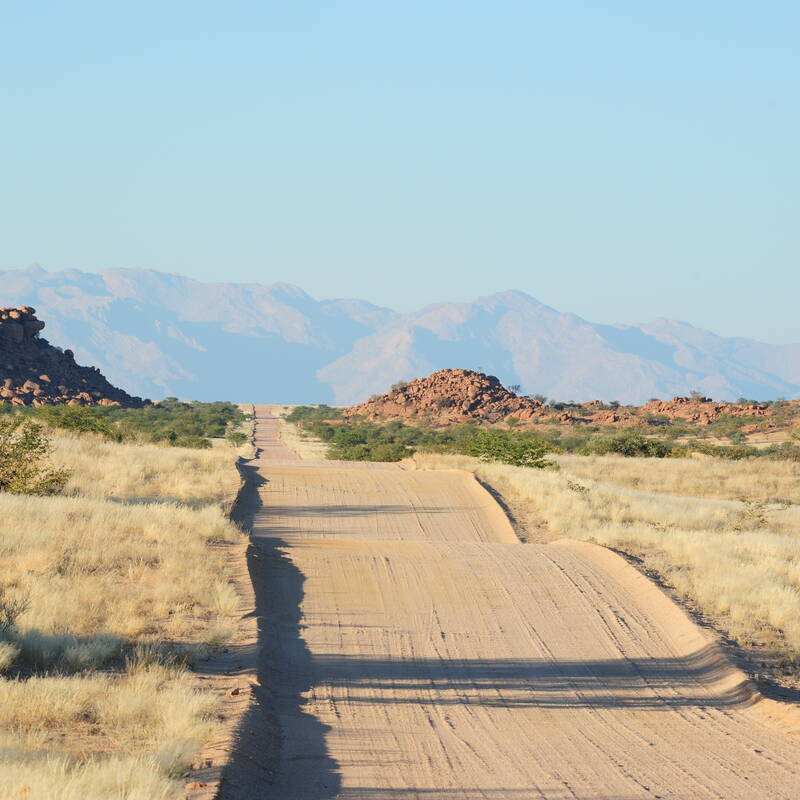
Self-drive - road types
Including pictures & descriptions of roads

Tipping in Namibia
Expectations & guidelines for tipping
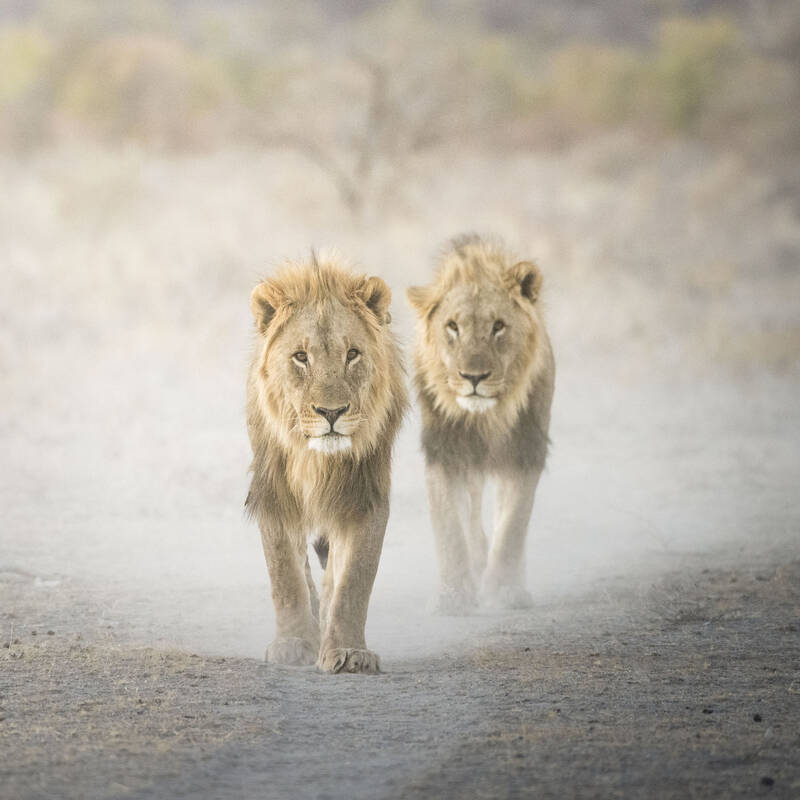
Wildlife - cats & dogs
Including cheetah, lion, leopard, jackal & hyena
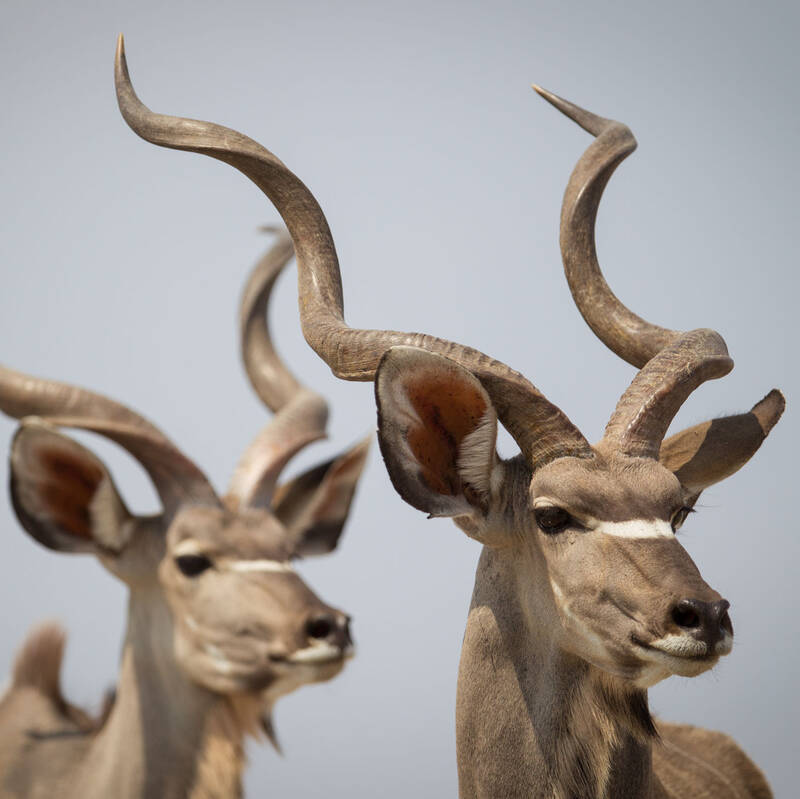
Wildlife - large antelope
Including sable, eland & blue wildebeest
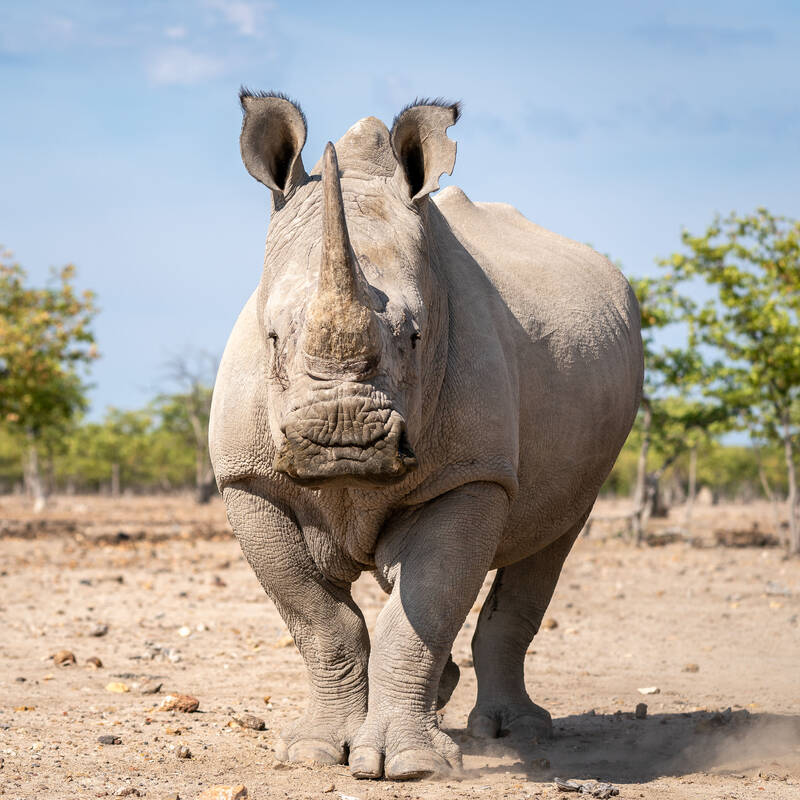
Wildlife - large herbivores
Including elephant & black rhinos
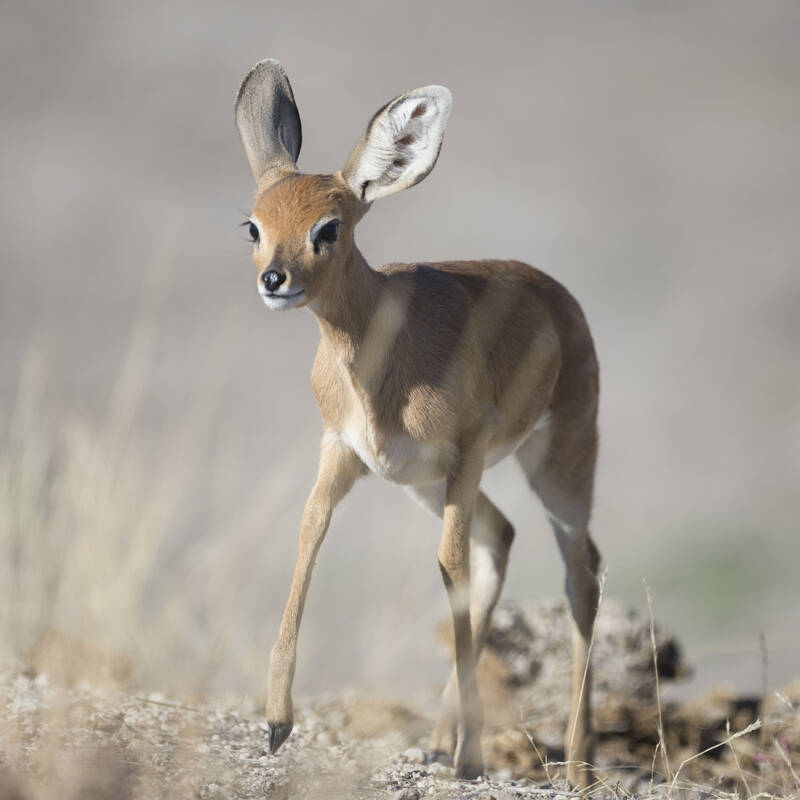
Wildlife - smaller antelope
Including klipspringer & common duiker
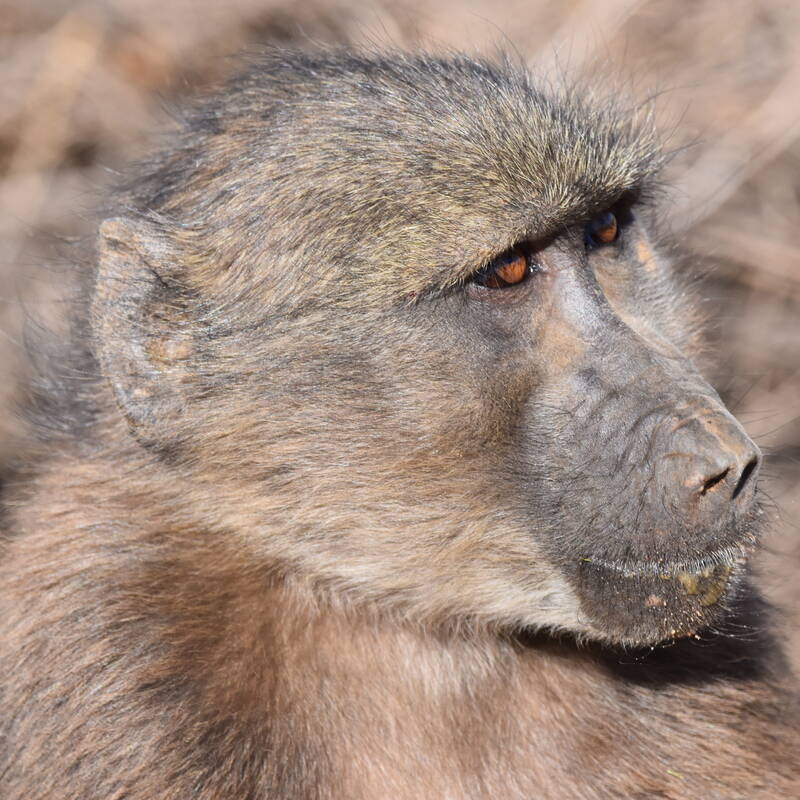
Wildlife - primates
including Chacma baboon & Lesser bushbaby
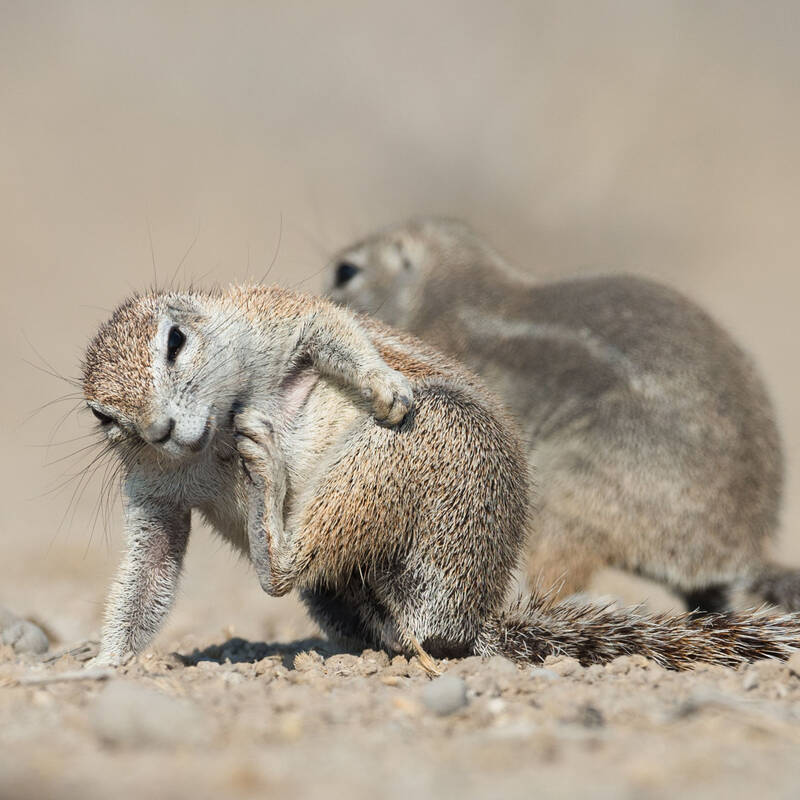
Wildlife - small mammals
Including banded mongoose & pangolin

Weather & climate
The best time to visit Namibia
Other lodges in Okonjima Nature Reserve
Alternative places to stay in this same area.

